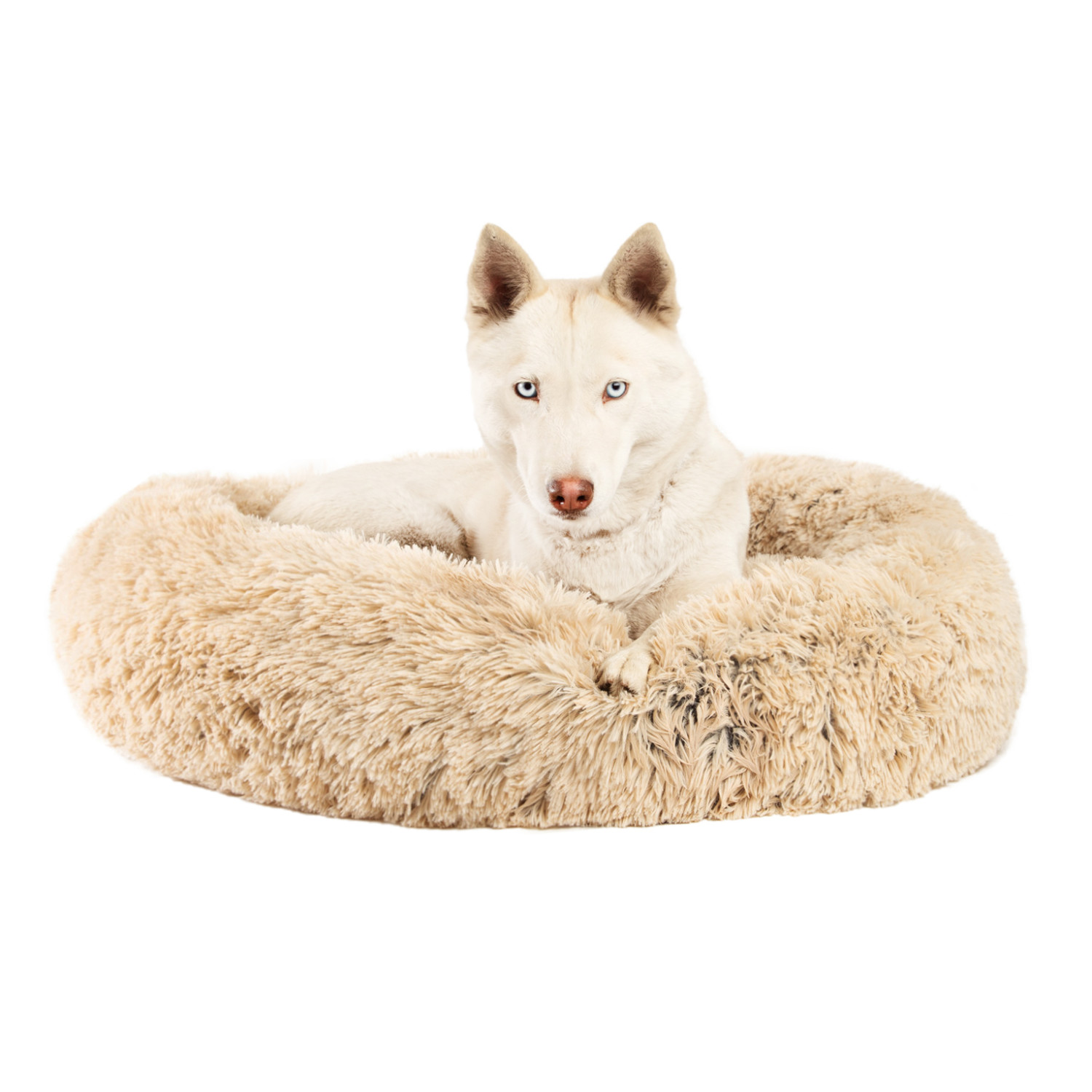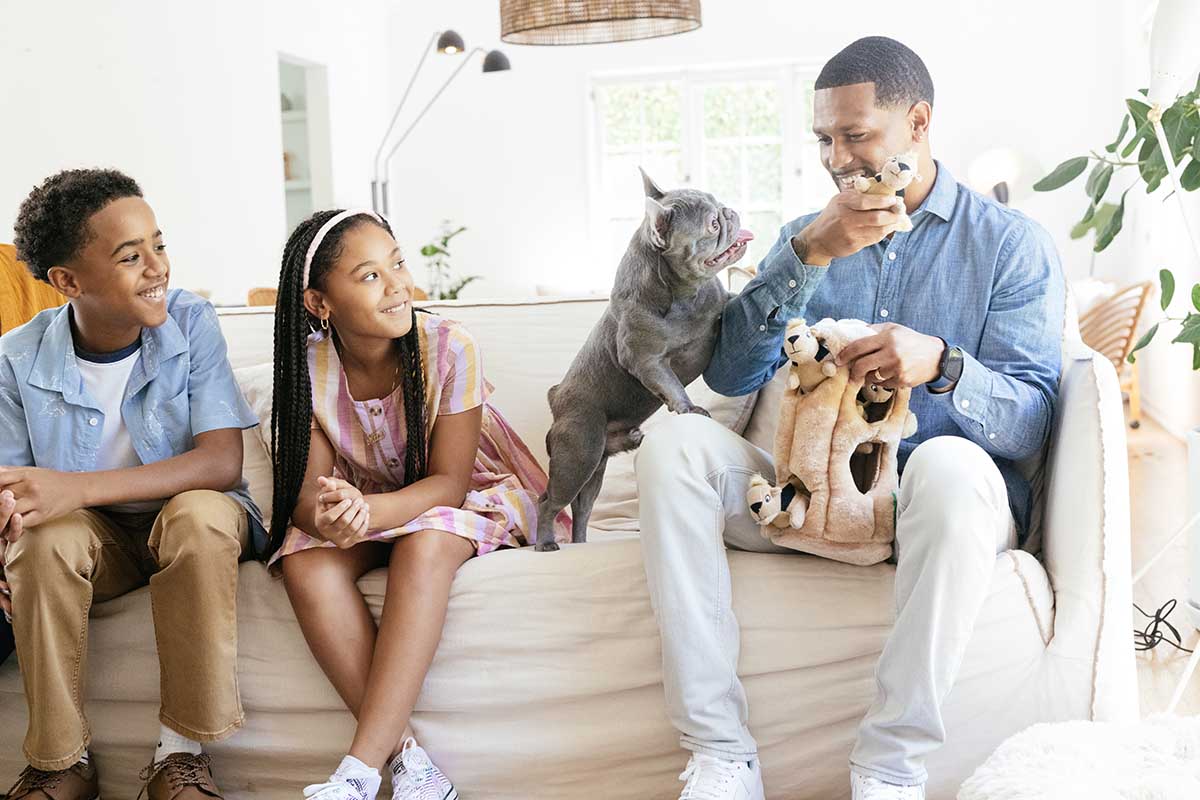Admit it. You probably have more pictures of your dog sleeping stored on your phone than is socially acceptable. Don’t worry, you’re not alone. With the variety of adorable dog sleeping positions our fur-children settle into, who could blame you?
Dogs get around 8-14 hours of sleep a day. Puppies, around 18-20 hours. You might notice that your dog’s sleeping habits involve many different poses, but did you know there is meaning behind each snooze position?
Read on to learn more about your dog’s sleeping positions and what they mean.
Common Dog Sleeping Positions
Common dog sleeping positions vary from a tightly curled-up donut to a fully splayed-out sploot. Each position your pooch sleeps in is adorable, and each can tell you a little something about how they are feeling. It’s all about reading dog body language.
The Burrower
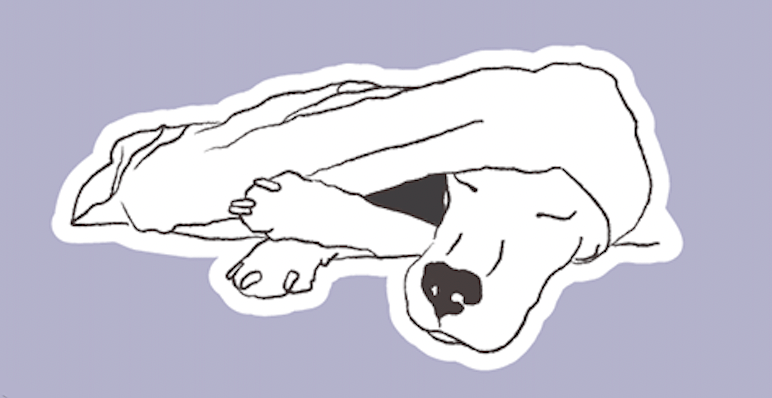
If your pup loves to retreat under blankets, pillows, and even fresh laundry for a nap, then your dog is a burrower. Dogs who love to burrow are seeking warmth, comfort, and safety. If you aren’t the type of pet parent who likes sharing your bed with your dog, then a burrow dog bed is a great option for your snuggle bug if he isn’t allowed to join you.
The Best Friends by Sheri burrow dog bed was specifically designed for dogs who love to burrow. The Cozy Cuddler bed comes with an attached blanket lined with soft faux fur your pup can cuddle under for a night of deep sleep. For smaller dogs or cats seeking more privacy when they’re off dozing, a pet hut cave bed is another great option.
The Superman (aka The Sploot, aka Frogging)
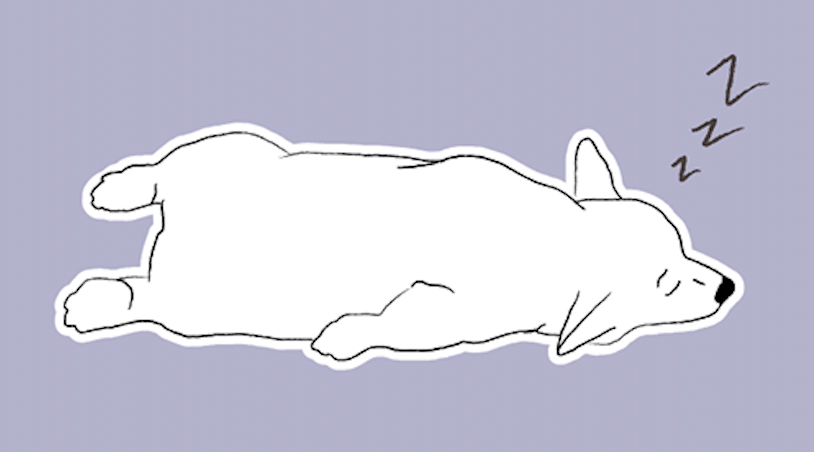
A splooter lays on its stomach with its front legs and back legs stretched out and flat. Made famous on the internet by corgis and bulldogs, any dog (or cat) can sleep in this position.
The Superman position typically occurs when your dog’s body heat is up and they are trying to cool down. A high-energy adult dog might do this mid-fetch for a little break as well. This position also allows them to get up at a moment’s notice during light sleep.
The Donut
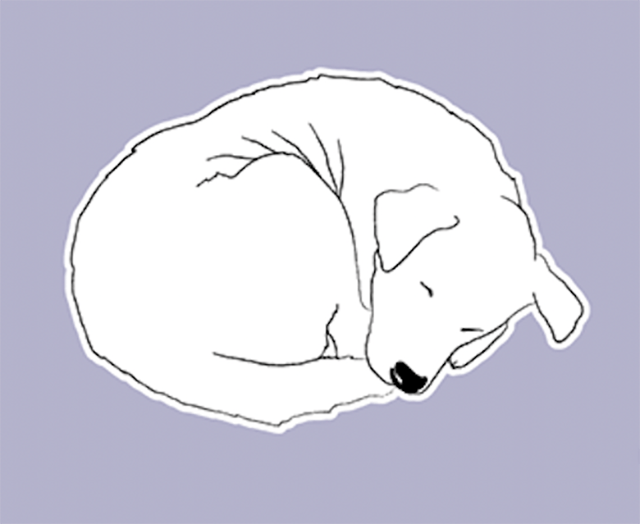
Donut sleepers curl up into a little ball for a snooze. This means they are regulating their body temperature while protecting their vital organs. Making themselves as small as possible in a donut position avoids leaving them vulnerable to potential predators.
Naturally, donut-style sleepers love donut dog beds. The Calming Donut Dog Bed is designed for these types of sleepers who want to rest in a snug, warm, and comfy spot.
Lion’s Pose
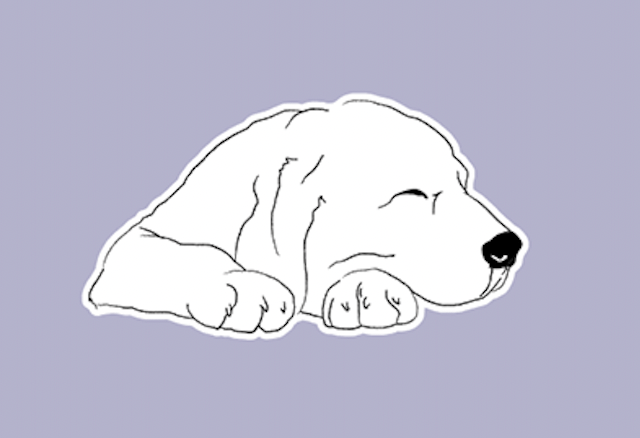
In a lion’s pose, a sort of lazy sphinx look, your furry friend lays his head in between or on top of his front paws. This sleeping behavior indicates your dog is just getting started falling asleep, so he can wake easily. As sleep sets in, your doggie might roll over on his side for deeper rest.
The Side Sleeper
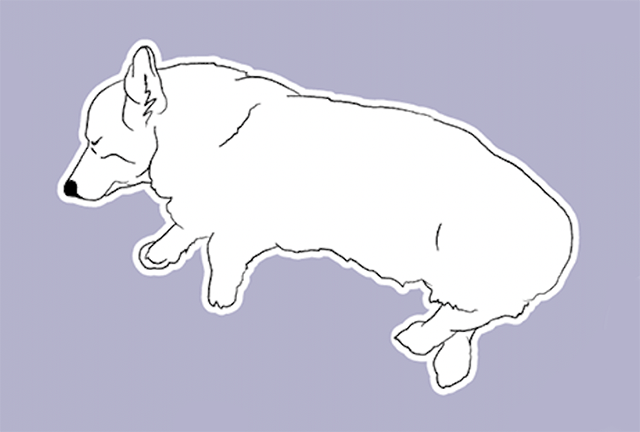
Dr. Stanley Coren, professor emeritus in the Psychology Department at the University of British Columbia, told PetMD that “As soon as the dog starts to dream, his muscles will relax and he will roll out of the lion pose into the normal sleeping position.”
Side sleeping is exactly what it sounds like. This sleeping position indicates that the dog is very relaxed and comfortable in his surroundings. It’s a sign of trust that they are comfortable enough to sleep in a position that exposes their most vulnerable areas. Often, dogs dream and reach REM sleep in this pose. A nap mat dog bed is ideal for side sleepers.
Belly Up
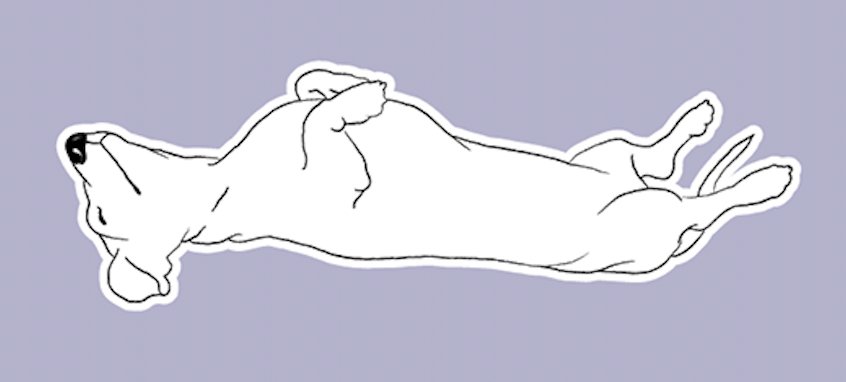
If your dog sleeps on his back with his belly exposed and paws in the air, then he is SUPER comfortable in his environment. He could also be trying to cool off. It’s like when us humans get overheated in bed, throw the covers off, and lay on our backs in a starfish pose until we cool down.
The Cuddler
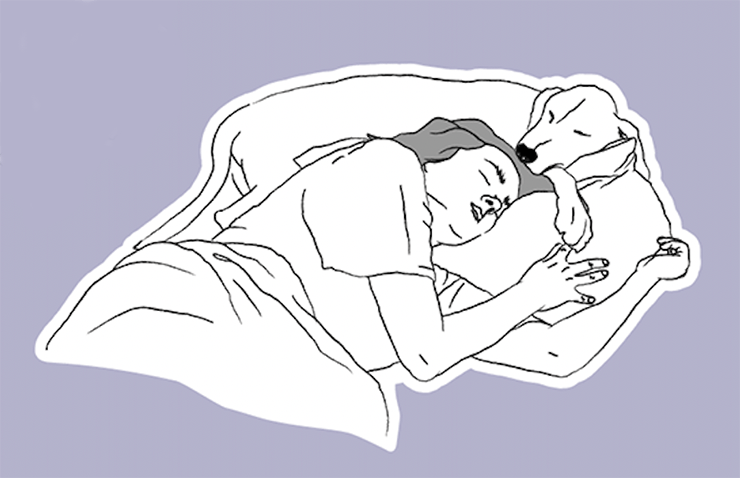
Cuddling has to be one of the cutest dog sleeping patterns. Dogs who love to sleep next to you or cuddled up against another dog seek that sense of security and warmth they had as puppies with their mother. It’s why pet owners find their dogs love a calming dog bed so much. The deep crevices and soft vegan fur are there to mimic that feeling of protection during puppyhood. Plus memory foam-like fibers are great for older dogs or large dogs with joint problems.
Dogs who settle into a cuddle position are getting their best sleep ever.
Dog Sleeping Habits
Pet sleeping habits aren’t so different from our own. In 2001, researchers at the Massachusettes Institute of Technology (MIT) reported that “animals have complex dreams and are able to retain and recall long sequences of events while they are asleep.”
They also follow the same sleeping states as we do, like REM and deep sleep.
Dogs do, of course, sleep a lot more than we do. According to the American Kennel Club: “Dogs tend to spend as much as half of their days asleep, 30 percent awake but relaxing, and just 20 percent being active. Older dogs require more sleep just because they tire out more easily and, as a general rule, bigger breeds also spend more time dozing.”
If something is off about your dog’s sleeping habits (for example, irregular breathing patterns, sleeping more (or less) than usual), make an appointment with your DVM. It could be a sign of an underlying health condition.
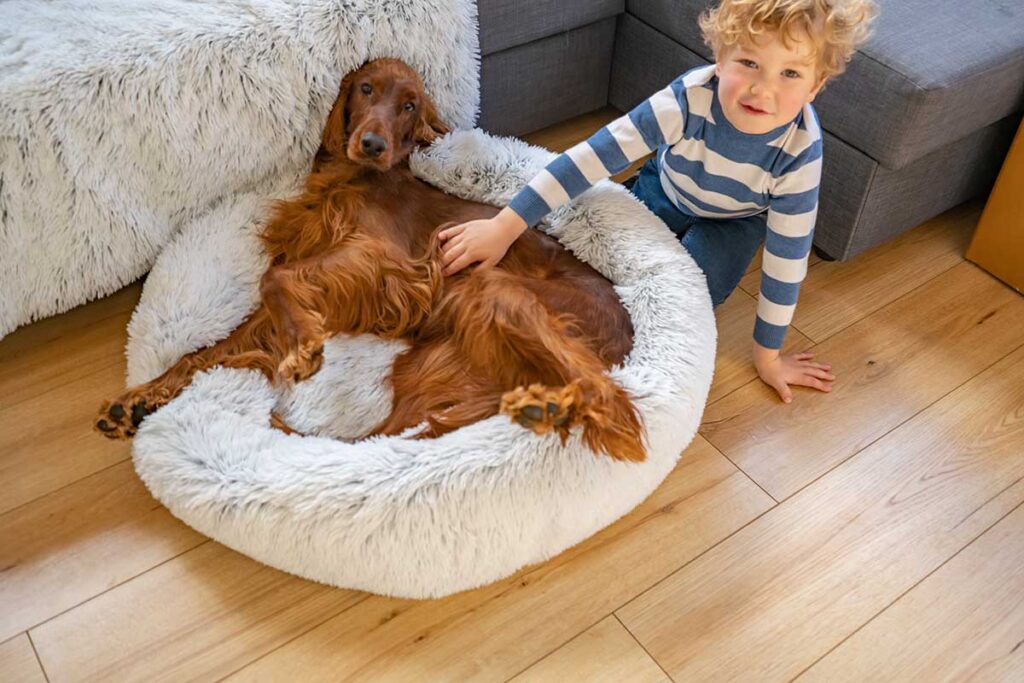
Dog Beds for All Kinds of Dog Sleeping Positions
Want to level up your dog’s bed? The following dog beds can accommodate any type of sleeper.
The dog bed for donuts and cuddlers
The Original Calming Donut Shag Cat & Dog Bed
$59.99 $30.00
Give your pet more than just a dog bed! Best Friend’s by Sheri is the original creator of the most popular dog bed that has surfaced the internet in recent years: The Calming Donut Dog Bed. This innovative cuddler shag design provides better sleep, supports joints, and offers a calming, self-warming effect. The donut cuddler is carefully crafted with durable, vegan nylon and filled with AirLoft fibers,…
The bed for side sleepers, Supermans, sphinxes, and belly up-ers
The bed for dogs who like to burrow
2-in-1 Honeycomb Ilan Hut Cuddler Cat and Dog Bed, Regular
$29.99
The Best Friends by Sheri Hut-Cuddler is the ultimate cuddling escape. This bed gives your cat or dog a place to feel warm snug and secure in a closed hut. It also has the versatility to be converted into a open round cushioned cuddler bed when your pet is feeling more social. Durable flexible and lightweight the microfiber foam construction is comfortable and supportive. The tightly woven polyester cover…

